Bonikta (Caio Aguiar), an artist from Pará who now “dresses” the Concertation’s digital channels, showcases his art rich in overlapping forms, times and spaces. Representative of the new generation of Amazonian urban art, he creates collective memories to imagine possible futures.
Raised on the banks of rivers and streams in Ourém, in the inland of the state of Pará, “by a family of women who make me much of who I am”, Caio expresses himself through different technologies and artistic languages, from graffiti to lambe-lambe, illustrations, paintings, photographs, videos, animations, tattoos, masks and digital drawings.
His work represents the universe of ‘boniktas’ (beautiful), figures that inhabit a timeless imaginary. He says that, just like his artistic vocation, there is no prior planning for his works: they are created spontaneously and naturally – and are never repeated.
The boniktas themselves are the result of this spontaneity. These “enkantados” (enchanted) beings arose as an apparition when he moved from Ourém to attend college in Belém. The shock followed by the fusion between such diverse Amazons caused “a huge explosion, a crossing. At that moment, the bonikta appeared, so I took her hand and she said: ‘come with me, I’ll show you the way’”.
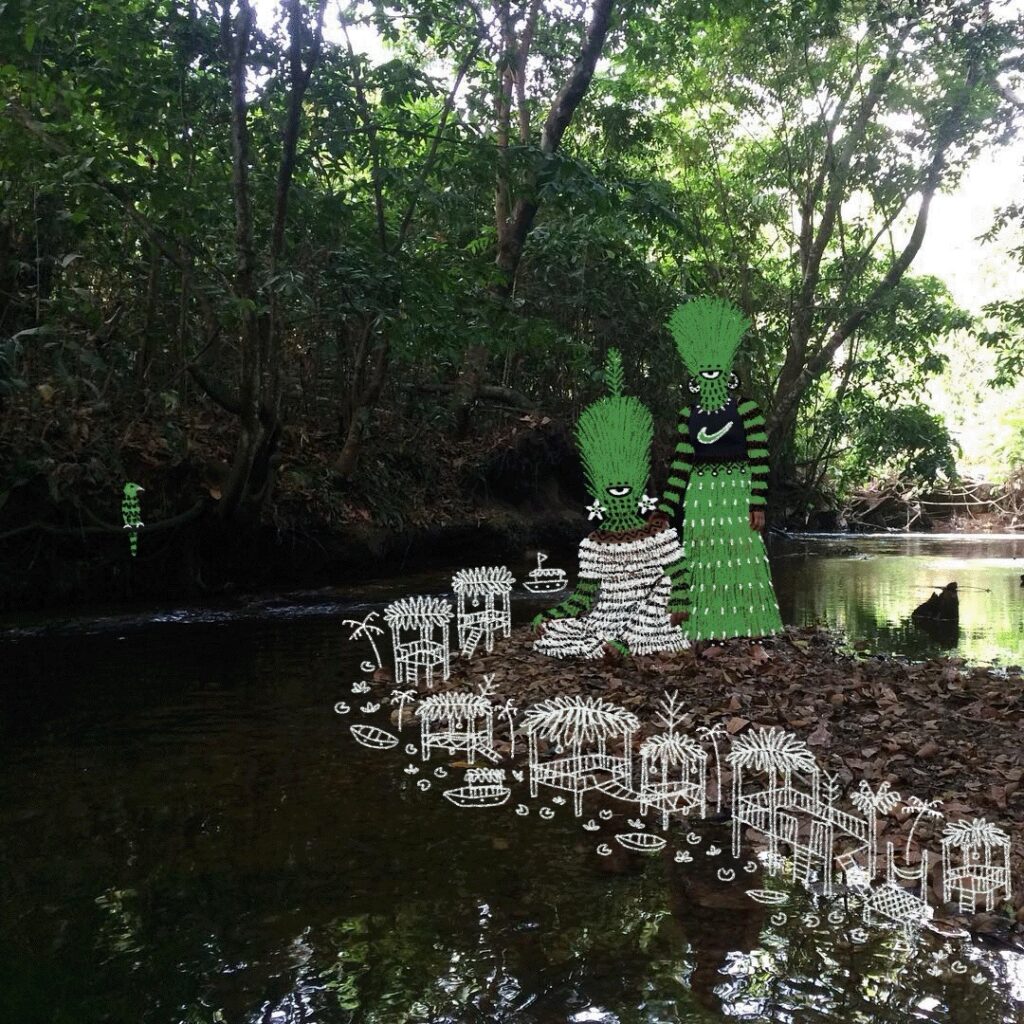
In the capital, Caio discovered another possibility of being and experienced many cultural manifestations. He saw graffiti, spray-painted walls, acquired new perspectives and accessed a greater diversity of people. He met “the urban art and hip-hop gang”, with which he went out to “make scribbles and graffiti”, and came into contact with the world of tattoos.
“The name ‘bonikta’ came from my first experience as a tattoo artist. My friend looked at the drawing on his skin and said: ‘Wow, how bonitka!’ (beautiful). Right then, I knew: that’s the name!”
The figures that naturally populate his works question what a beauty standard should be like. They arose from the need to create an identity for himself in the city, which would allow people to know and remember him. They live inside him, they are his alter ego and represent paths built on this journey through images, scribbles and photos.
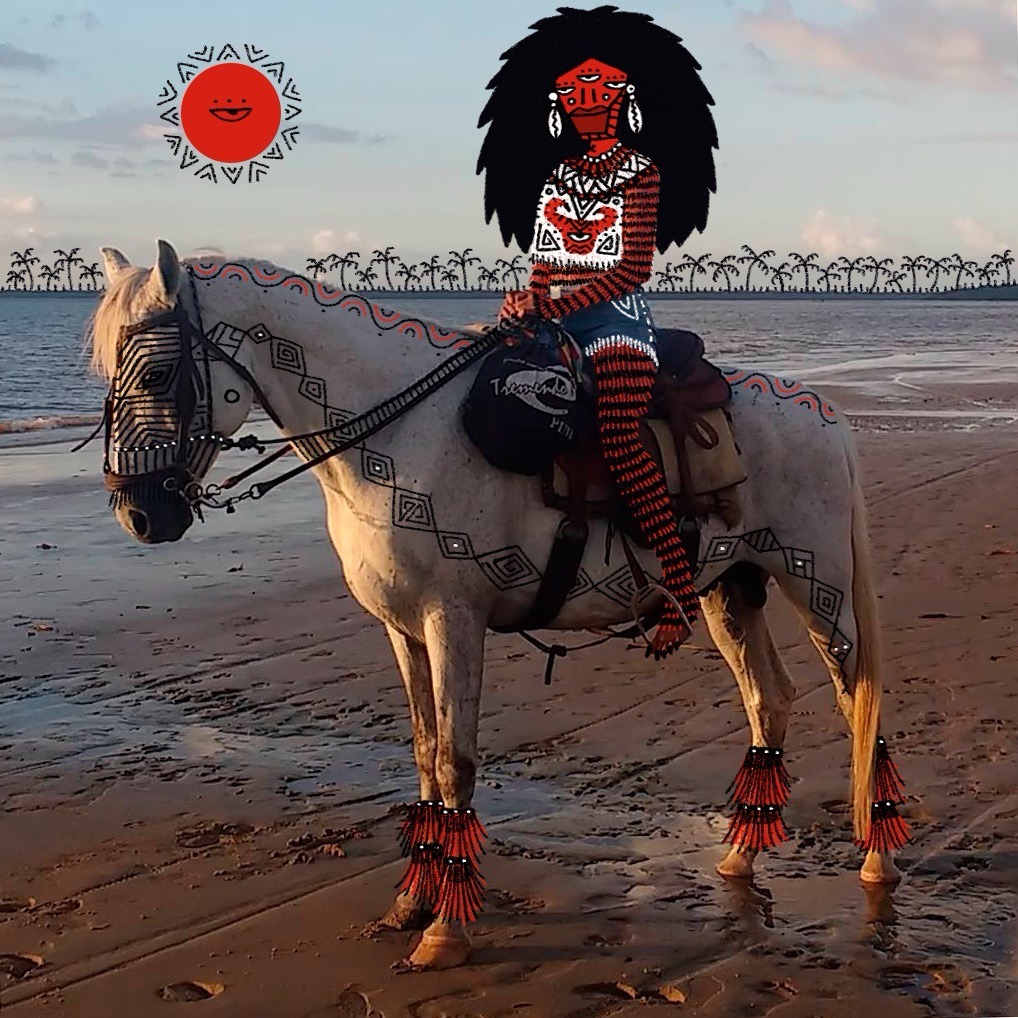
Much like he played as a child in the rivers of Ourém to reach elements and beings brought from other waters, today Caio dives within himself to access “enkantadas” (enchanted) memories. The boniktas appear in dreams, be they with closed or open eyes. They usually have many eyes, lines and mouths, hair and earrings that remind one of stream waters, fish and snakes. And also indigenous ancestry and Marajoara traits of traditional Amazonian cultures.
“Life is not a straight line. It is a big spiral. We are spinning, we come and go. I am not going one way only. It is not a path where I go from here and the future is up ahead. No. The path is a great dance”
Amazonian ancestry is very present in Caio’s work. He portrays it as a form of appreciation and encounter, evoking the idea that it is impossible to think about a future without the presence of the original peoples.
One example is series “Memórias Enkantadas” (Enchanted Memories), which illustrates the Concertation´s website and brings together photographs with digital graffiti. From the real image, another layer of mystery emerges questioning it. What is upon this image sometimes comes from the future, sometimes the past.
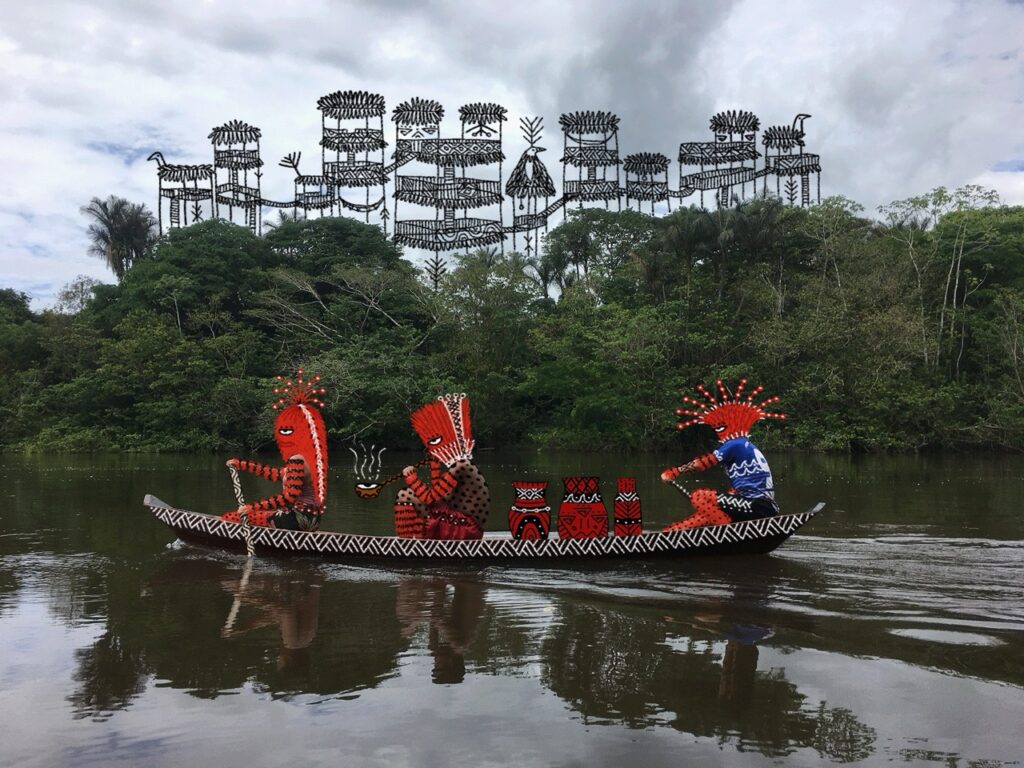
It is also an affectionate way of remembering childhood. Within these Memórias Enkantadas, Caio rescues moments with family and friends on the banks of River Guamá, an indigenous term that designates the “river that rains”, and, for him, it “rains memories”.
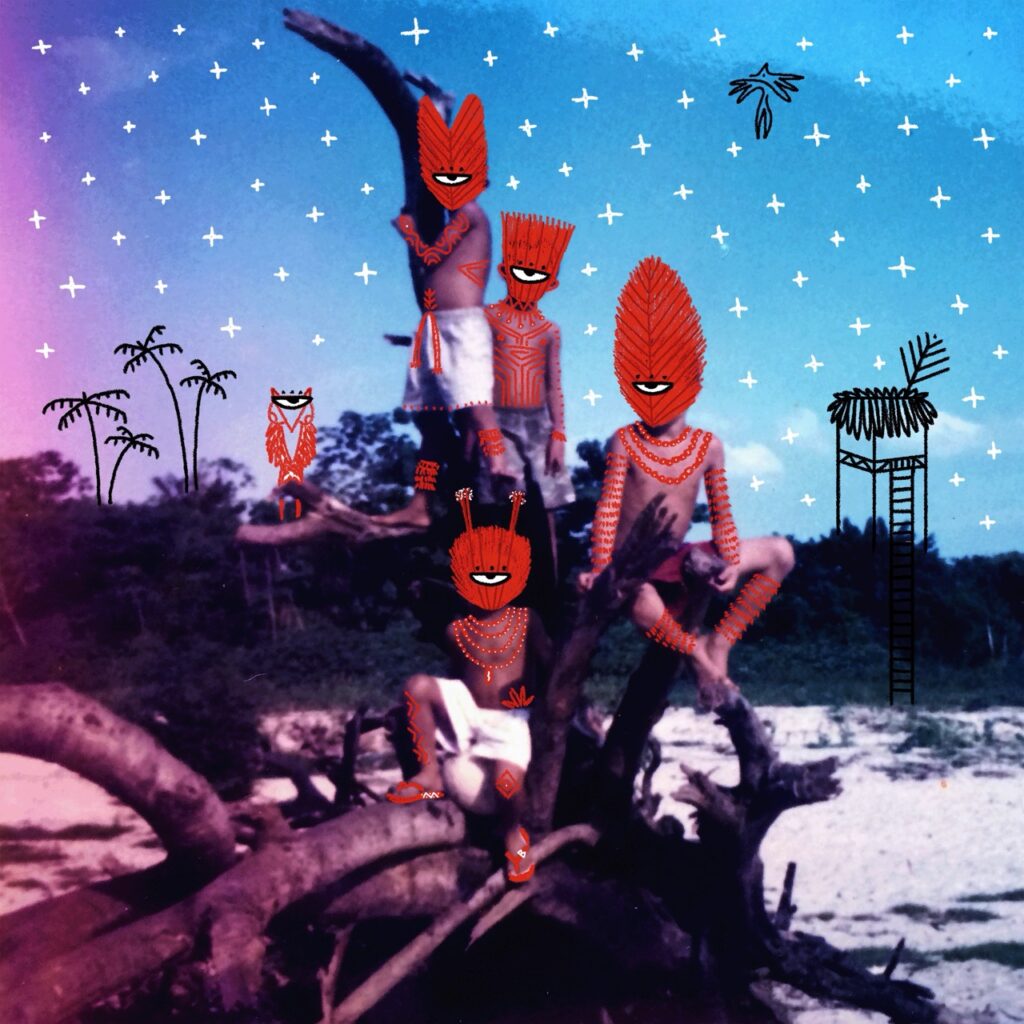
In work “Kuydado por onde pisa”, produced on commission for the Bienal das Amazônias (2023) and which mixes lambe-lambe art with photo collage, graffiti and enchantment, the artist talks about the care and respect that one must have for the place we are in. It symbolizes the paths and crossroads to be followed, where everything has been owned and protected for a long time.
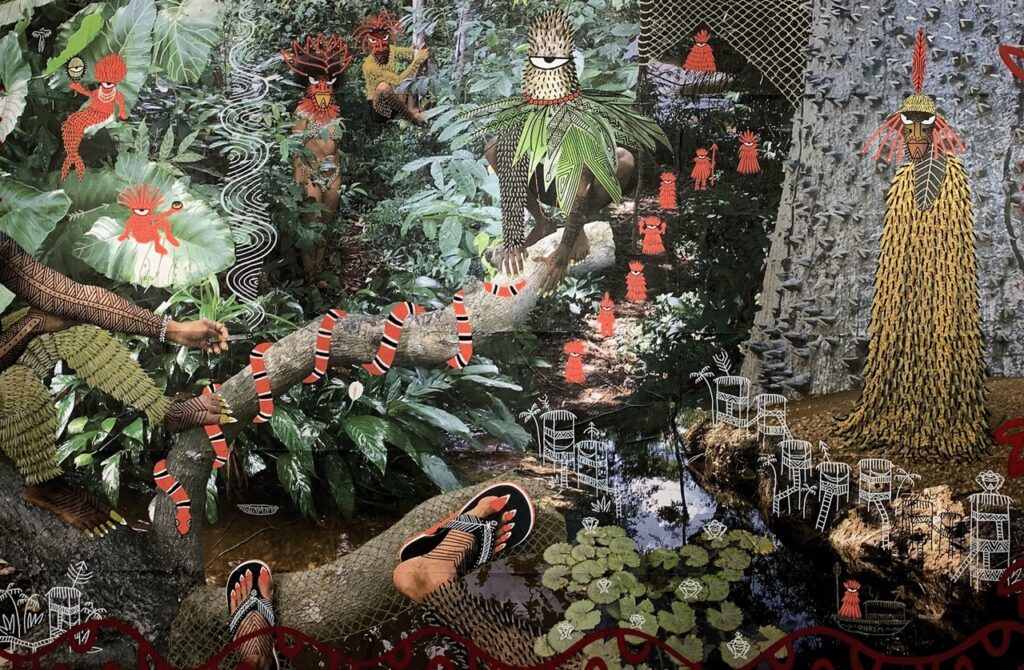
(work first exhibited in the first edition of the Bienal das Amazônia)
In turn, “Regeneración” is a fragment of a collective work developed during a workshop in the city of Florencia, Colombia. It reflects on the recovery of cities from the invasion of forests in major centers and people, who transform into plants or animals.
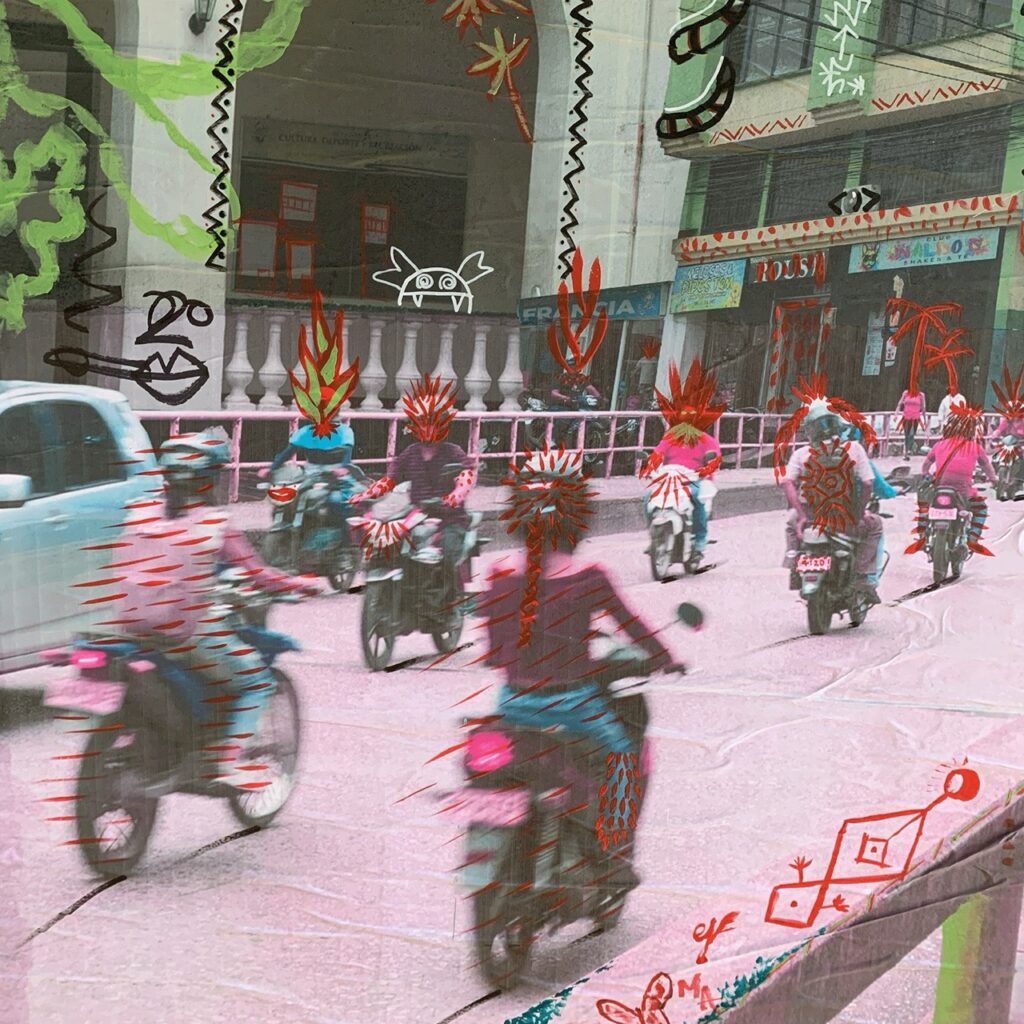
“I like to enchant others. Art does this to me. When I make art, I enchant myself. When I access art, I am enchanted. I am referring to the enchantments of the forest, which are beings that protect you, but also scare you”